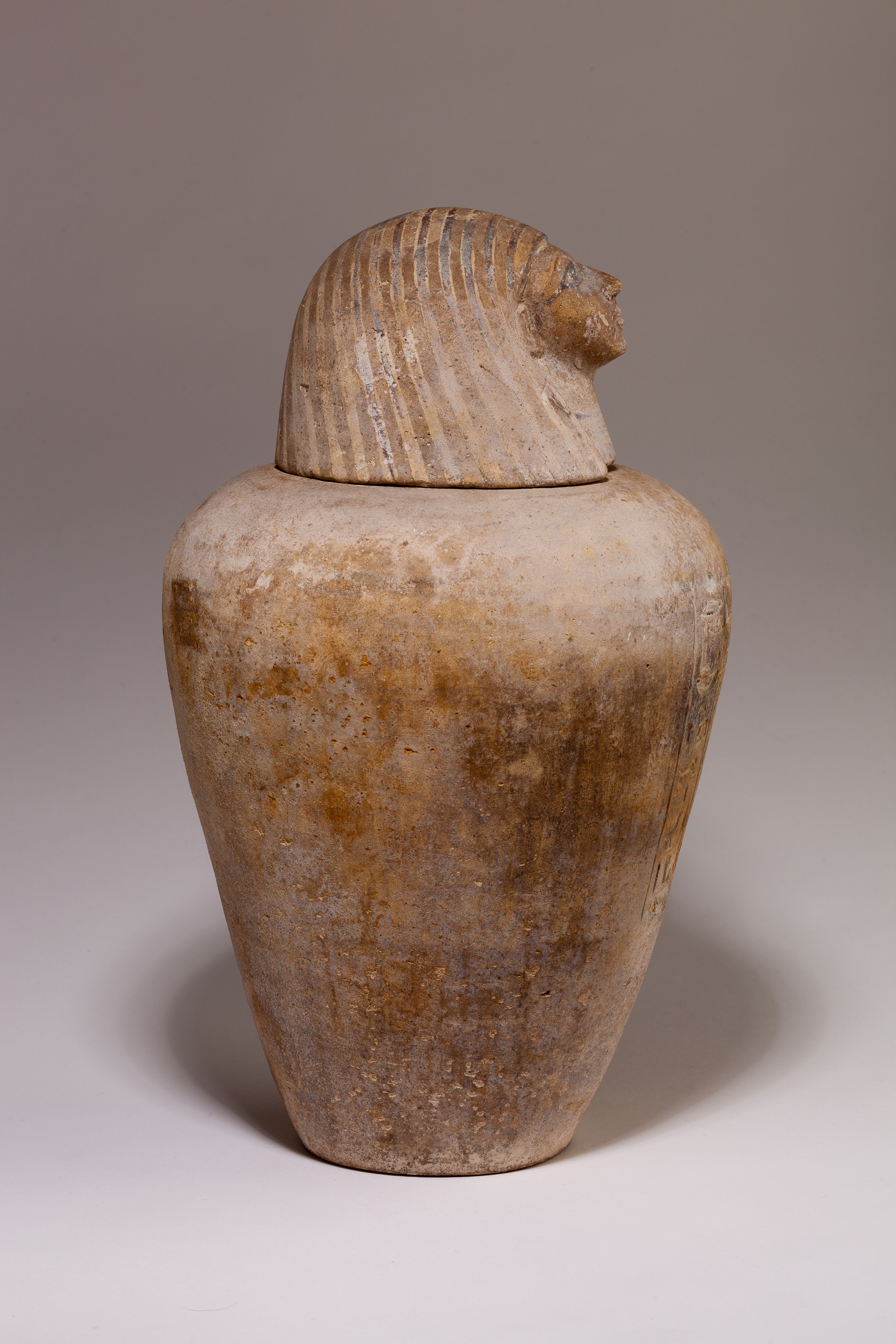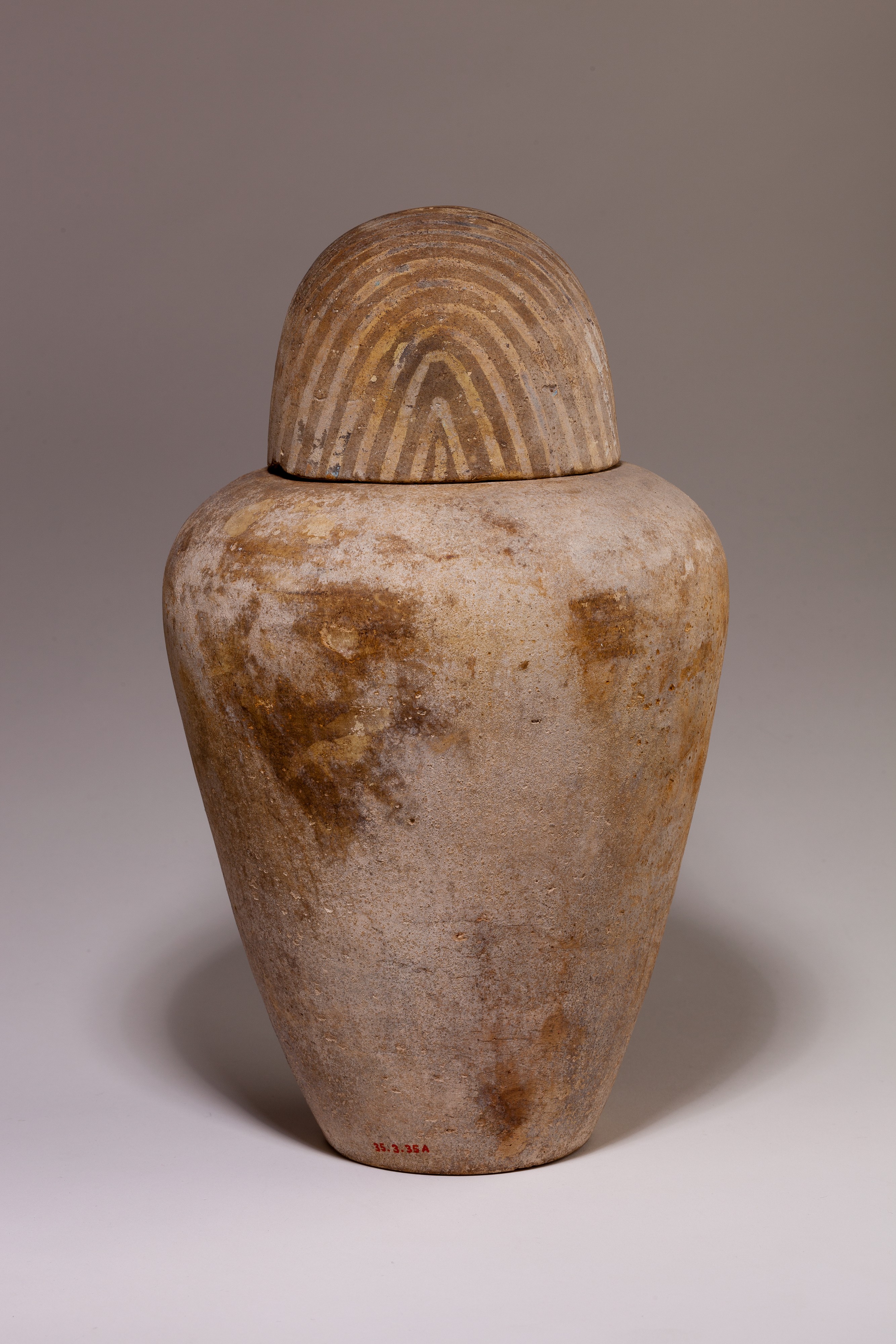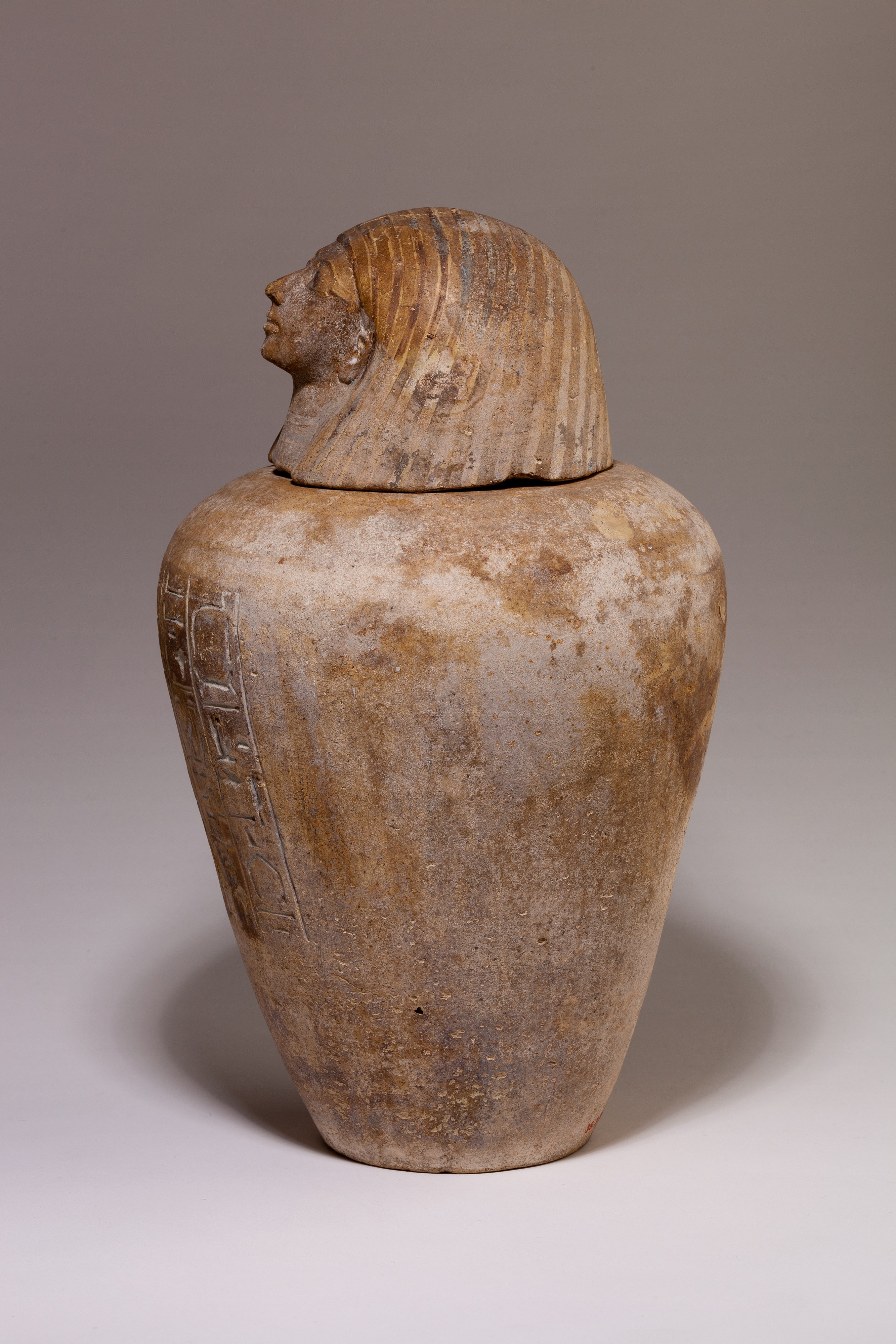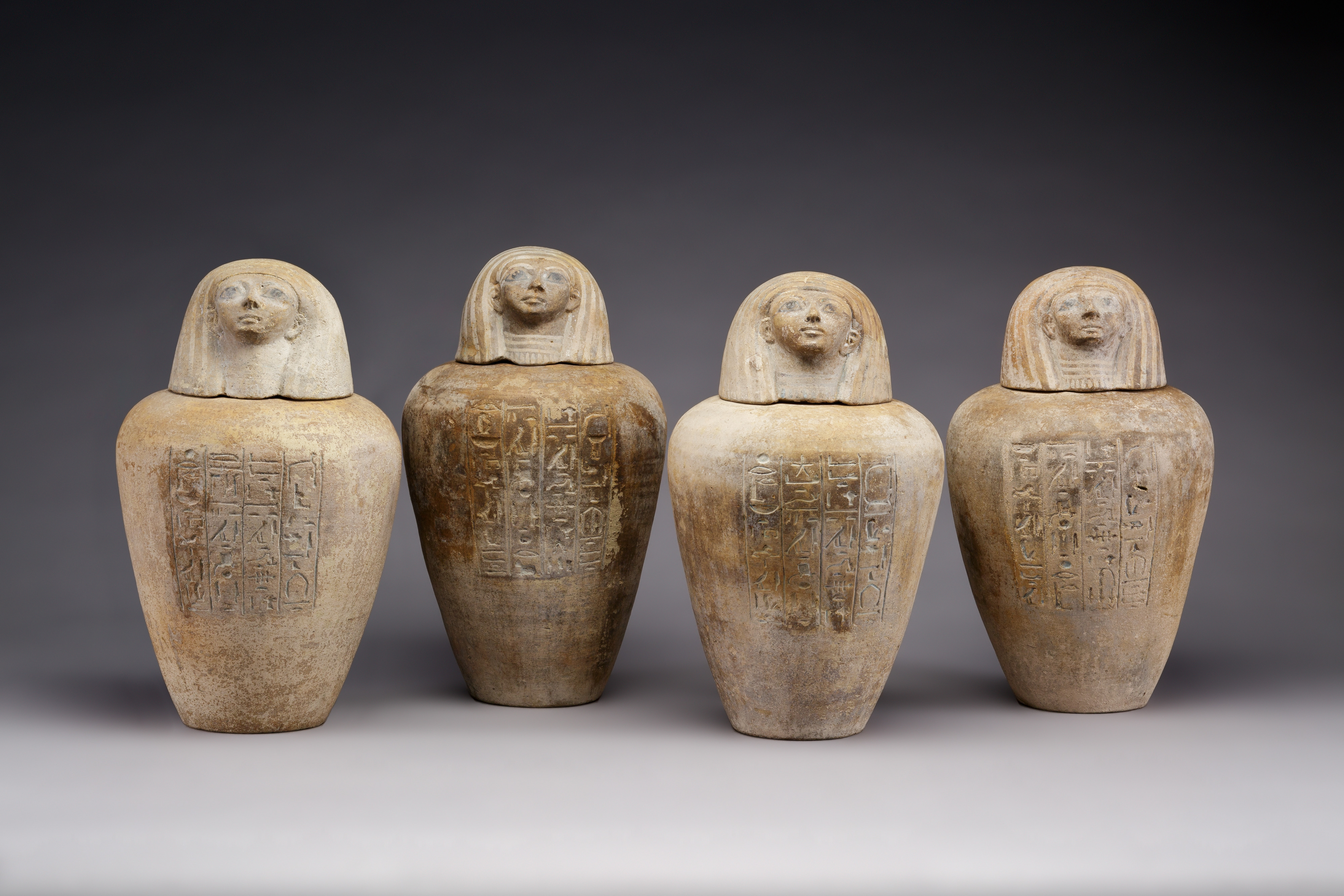Canopic Jar of Ruiu
New Kingdom
The burial of Ruiu was found in the tomb of her father, Neferkhawet, which was excavated by the Museum’s Egyptian Expedition in 1935. Ruiu’s coffin and canopic box had been placed in the east chamber of the tomb along with the burials of seven other family members. The canopic box had been badly damaged by dampness and insects, but enough was left to allow the archaeologists to reconstruct the box and its decoration and texts on paper.
The box was divided into four compartments by two interlocking partitions, and the jars had been placed in these compartments. Each side of the box was decorated with the image of one of the four funerary goddesses: Isis, Nephthys, Selkit, and Neit. In the texts on the box, each goddess was associated with one of the Four Sons of Horus who protected the four internal organs that were removed during mummification and were stored in the jars inside the box.
Ruiu’s four canopic jars are made of buff-colored clay. Details of the face, necklace, and head covering were painted black, white, and blue. The text on each jar was incised and painted blue. This jar is dedicated to the goddess Neit and to Duamutef who protected the stomach. The text states that Neit wraps her arms around what is inside the jar, and protects Duamutef and the House Mistress Ruiu who is honored before Osiris.
Due to rights restrictions, this image cannot be enlarged, viewed at full screen, or downloaded.
This artwork is meant to be viewed from right to left. Scroll left to view more.






